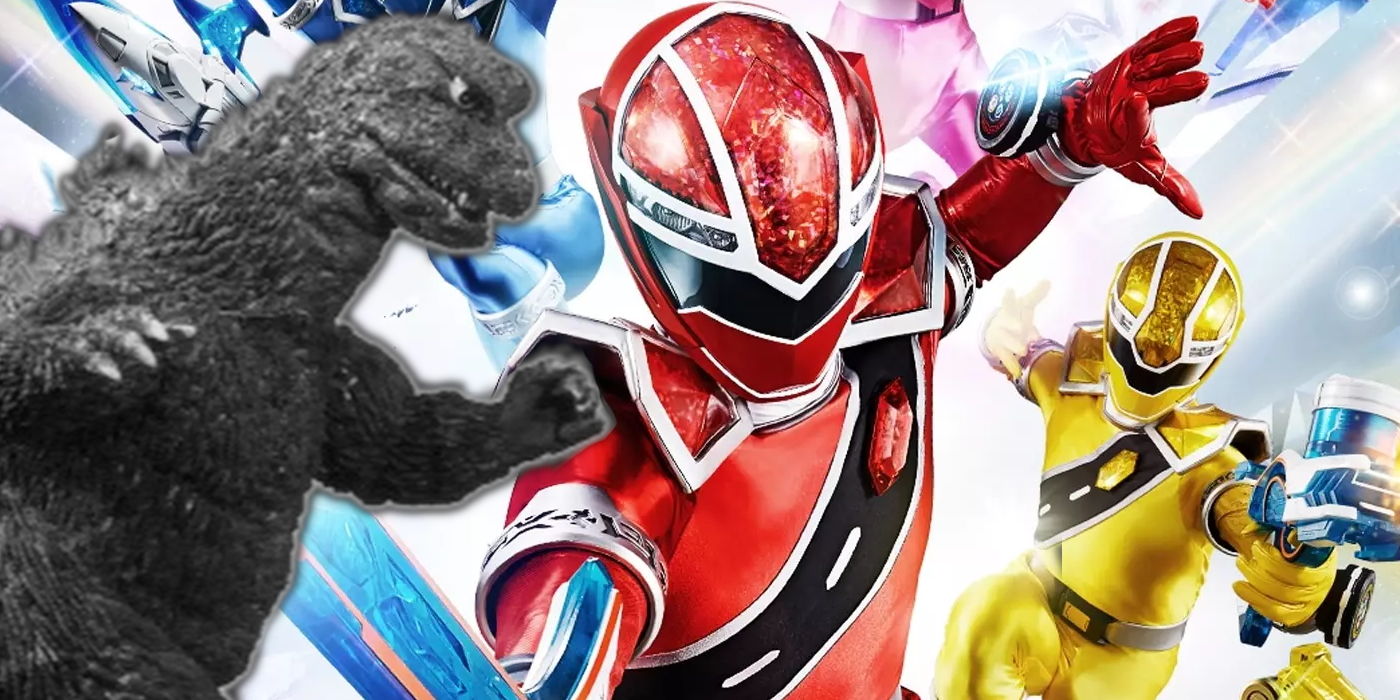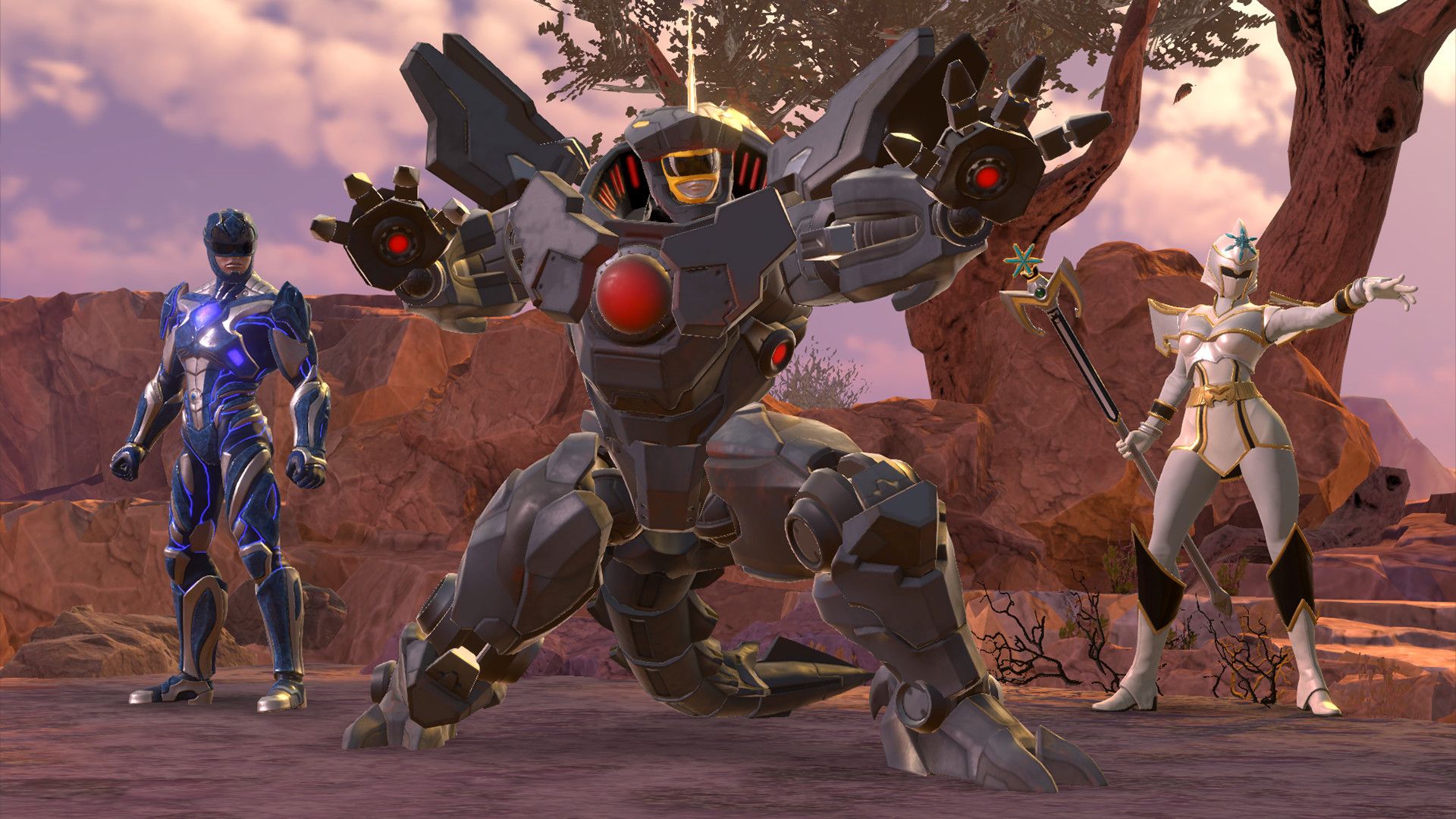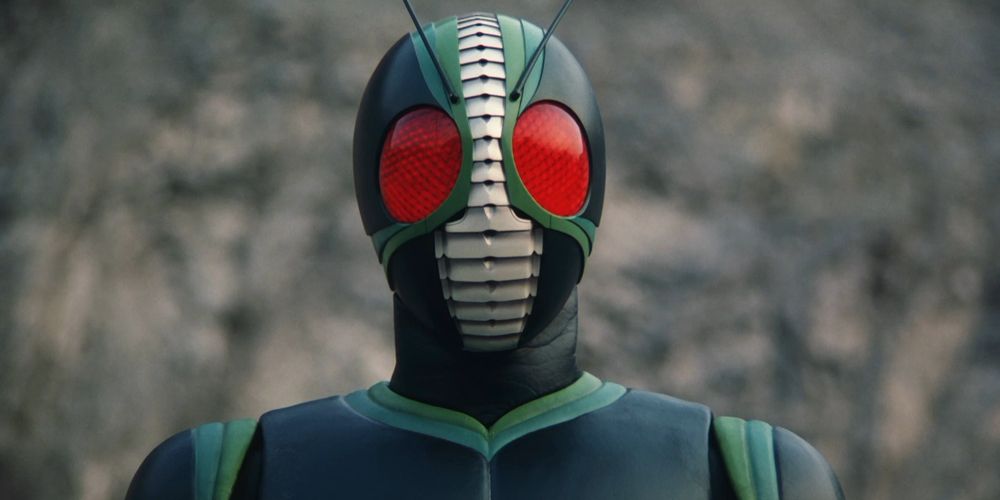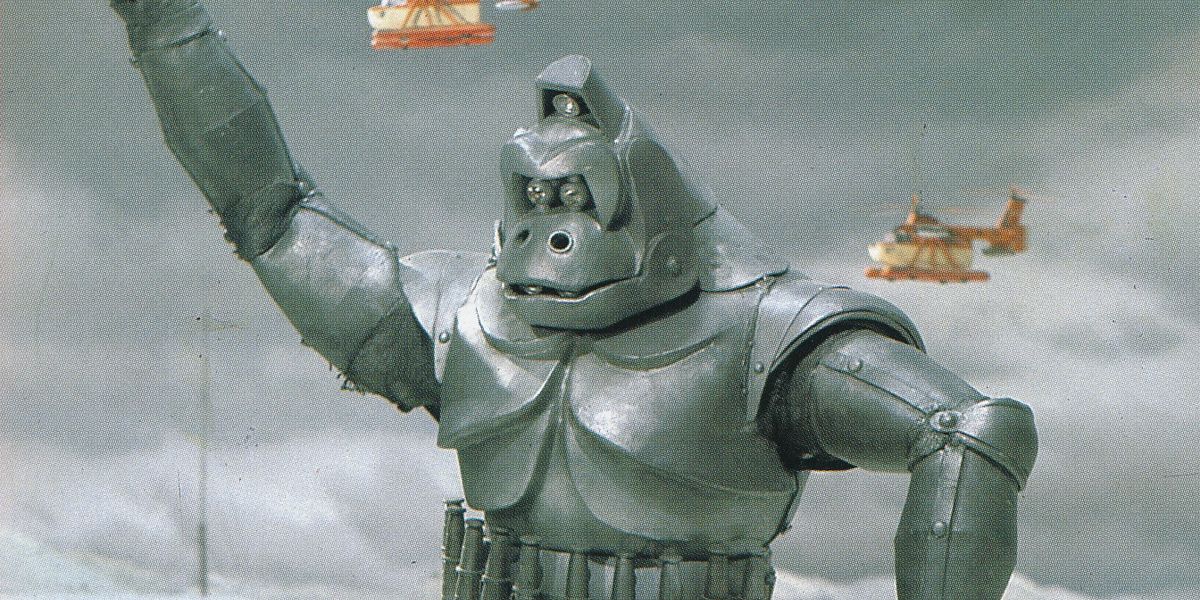Television shows featuring brightly colored robot people in spandex riding obtrusive motorcycles and fighting behemoth lizard creatures have long been something that Americans can only find in Power Rangers. Now, shows in the tokusatsu genre -- including, for the first time, Kamen Rider -- have been made available to watch much more easily for viewers in the U.S thanks to Shout Factory/Pluto TV. Also, Toei’s now-globally accessible YouTube channel will begin streaming 70 others starting on April 6.
What some might not know is that Power Rangers is an American adaptation of a Japanese show, Super Sentai, a series that follows the long-standing tradition of tokusatsu films. Tokusatsu roughly translates in English to "special effects film" or "practical effects film." But its origin doesn't come from superheroes -- it actually began with 1954 with the original Godzilla. Some may know Godzilla as the first kaiju film, however, Godzilla was also the first tokusatsu film. In fact, for the first three years, the tokusatsu genre was only monster/kaiju movies.
Then in 1957, filmmaker Teruo Ishii turned tokusatsu entertainment into a worldwide phenomenon with the creation of the film series, Super Giant, the first Japanese transforming heroes serials ever created. Super Giant was considered a massive success and even had a short run in the United States as a dubbed show called Starman. After the success of Super Giant, hundreds of tokusatsu films flooded the Japanese market and eventually spawned the American adaptation, Power Rangers.
Tokusatsu isn't for everyone, and until recently, there wasn't much of an American market for the niche genre. Diehard fans have, for years, been confined to searching websites and praying for an English subtitled version -- which years ago, was an incredibly hard thing to find. Luckily, with Shout! Factory/Pluto TV bringing several classic tokusatsu shows legally to American shores, it's never been easier than now to revisit old favorites or discover new ones.
Though Kamen Rider -- the most well-known of the genre outside of Super Sentai -- has never received mainstream television exposure until now, it has had mainstream toy and merchandise exposure. The insect-costumed, motorcycle-riding superhero action figure has found itself a home in Walmart, GameStop, and Hot Topics across America. Thanks to Bandai Co. a Japanese toy company that distributes to markets all over the world, Kamen Rider is a familiar face. And Bandai Toys might be the only reason that tokusatsu (outside of Power Rangers) has any popularity in the country.
Bandai, of course, has also produced toys for Power Rangers, generating over $6 billion over time, marking the franchise's enduring popularity. Its initial boom opened the market for other tokusatsu toys, even from shows that Americans weren't accustomed to, including Kamen Rider, Ultraman and Mirrorman, made easily accessible to the public when commercial toy stores became a thing.
But if Power Rangers and tokusatsu toys became so popular, why didn't the television shows they came from catch on in the United States? Tokusatsu entertainment isn't like anything that gets mass-produced in America. Even Power Rangers was toned way down from the original Super Sentai. To be able to watch and appreciate tokusatsu television, audiences have to embrace the absurdity. Yes, that seemingly average person just transformed into a robot bug without changing into a costume; yes, that motorcycle can inexplicably teleport; and yes, they do need to yell to transform. The more you try to make sense of the world or ground the tokusatsu genre in real-world logic, the less fun it will be to watch. Even when American television is over-the-top, it is still tame in comparison to the tokusatsu style of filmmaking.
When exploring the tokusatsu genre, don't make the mistake of thinking that it will be similar to anime, as many newcomers might be tempted to do. Although anime might take inspiration at times from tokusatsu and vice versa, these two genres aren't interchangeable.
Tokusatsu filmmaking is, ultimately, about the experience, but that isn't the only thing tokusatsu films/shows have to offer. This form of entertainment -- though inspired, in part, by American superheroes at first -- is inherently Japanese and has something to say beyond just "cool monsters." In the original Godzilla, the nuclear bombs that were dropped on Hiroshima and Nagasaki were the catalyst that awoke the monster. Americans rarely explore the storytelling in tokusatsu films because it's easy to be distracted by the absurdity and over-the-top special effects than to analyze that the heart of tokusatsu entertainment has something to say beyond "look at this!" The story and symbolism are often overlooked because of the exaggerated effects; viewers have to look at the spectacle as a way of telling the story, not a hindrance to the story.
For new fans, it might be hard to know where to start and learn how to watch. Don't feel the need to get an extensive backstory for enjoying the shows. Just jump in. If you're looking to get into the genre but don't know where to start, the answer is simple: pick the titles that appeal. If you're looking for a more adult, darker take on the tokusatsu genre, there's Garo. If you're interested in classics like Kamen Rider but don't want to watch something dated, you can jump into the Kamen Rider Amazons series, which began in 2016. If you're going to dive headfirst into the classics, Ultraman and Mirrorman are good options.
Whatever you decide to watch, know that this genre isn't for everyone, and just because you love anime doesn't mean you'll like tokusatsu television. But if you're already a fan of Power Rangers and Godzilla, there is something in this genre for you. You can start watching Pluto TVs TokuSHOUTsu channel now, while Toei's YouTube channel will launch its tokusatsu slate on April 6.




